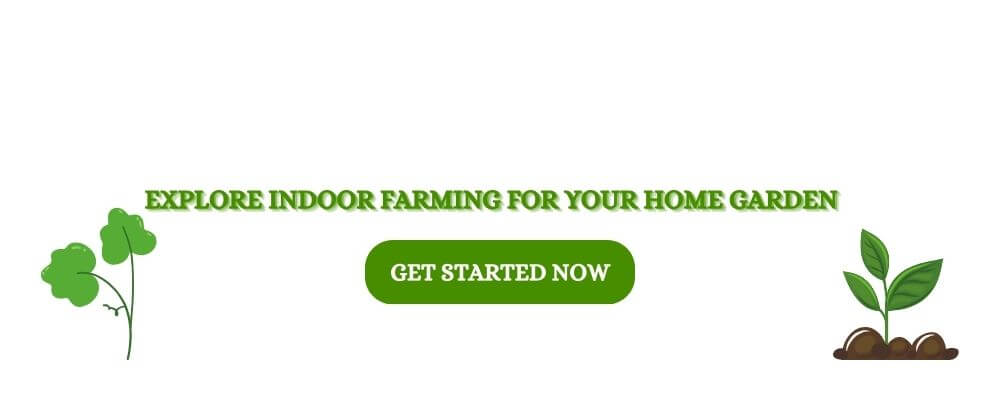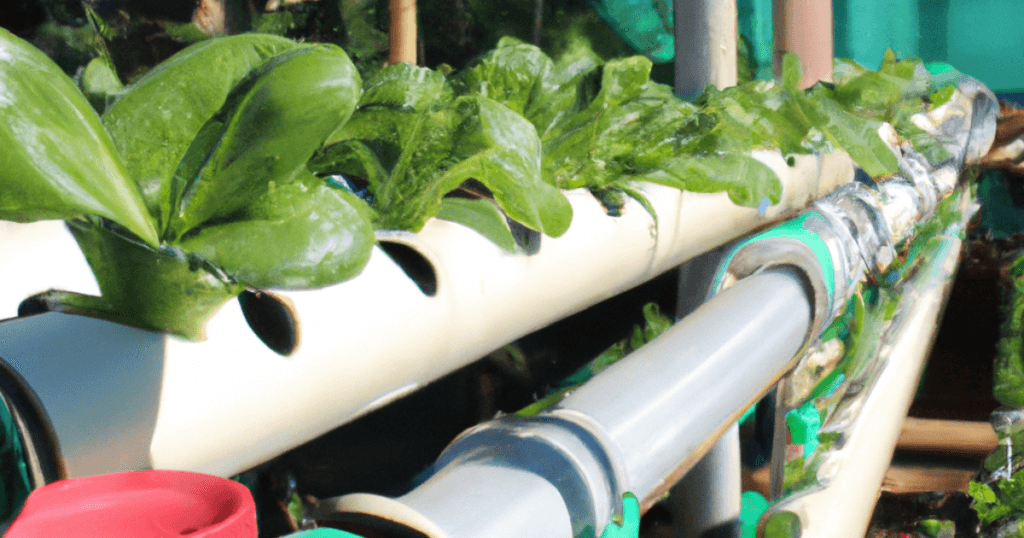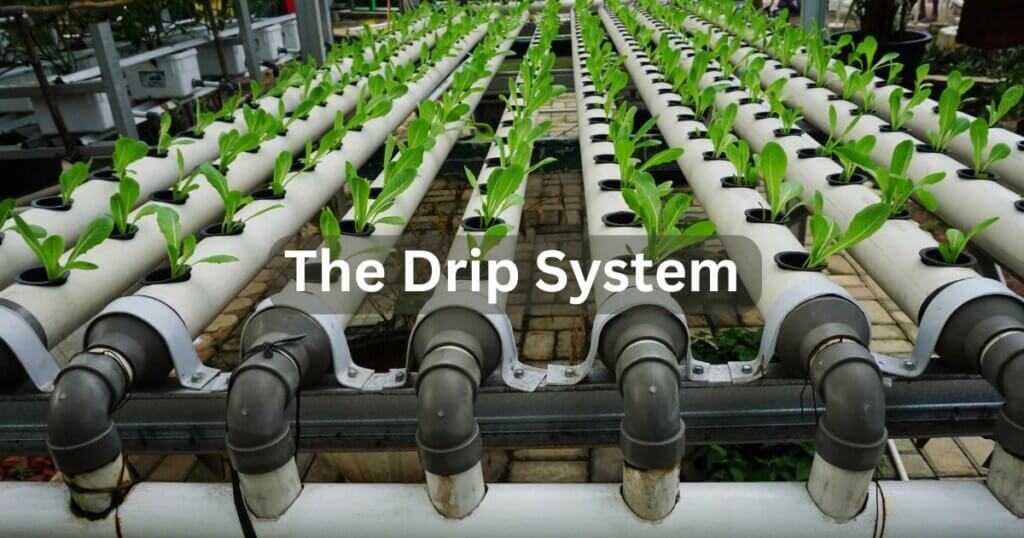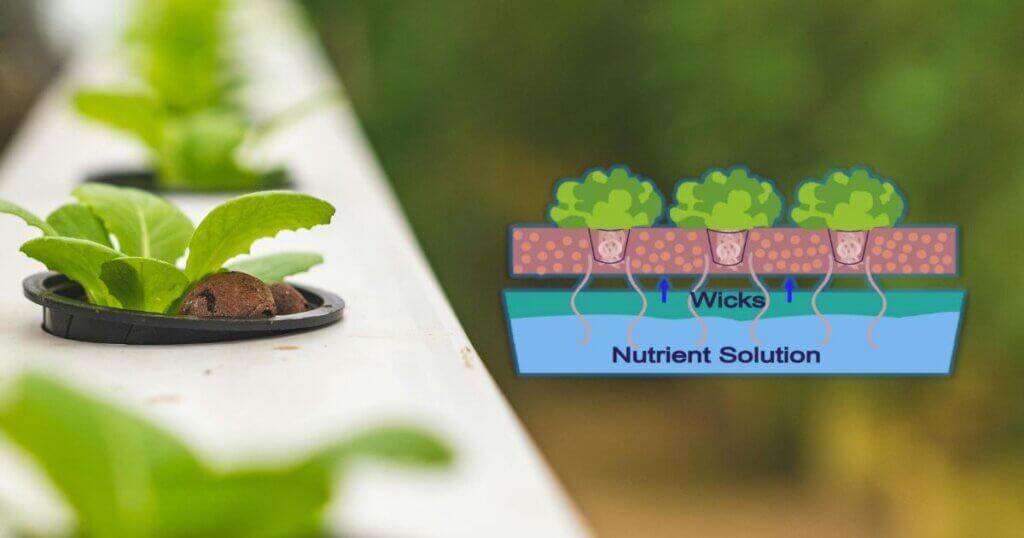Simplify Indoor Farming with Automated Hydroponic Systems
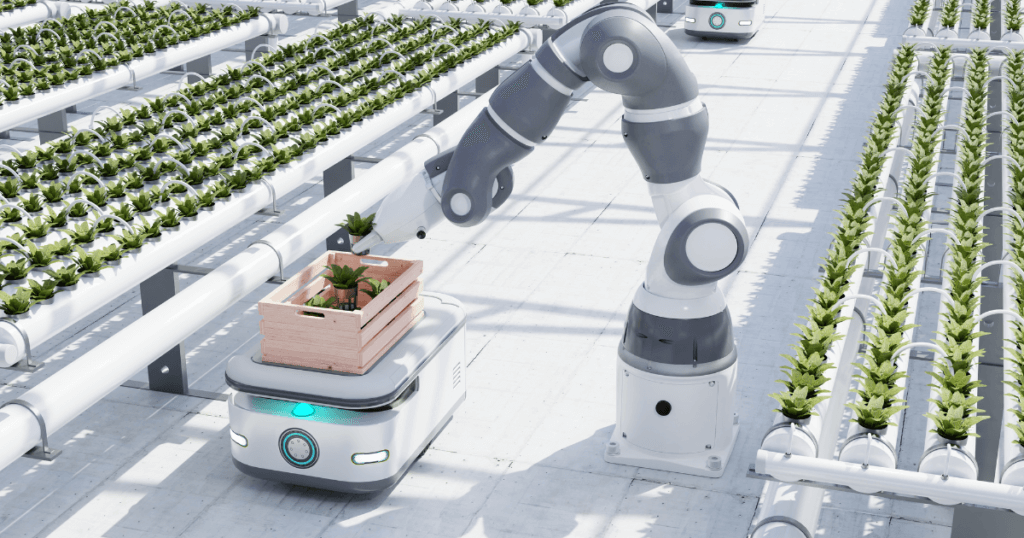
Some of the links in this post are affiliate links. As an Amazon Associate, we earn a referral fee from qualifying purchases—at no extra cost to you.
Harnessing the Power of Automation for Efficient Indoor Agriculture
In the ever-evolving world of agriculture, innovative solutions are constantly being sought to optimize productivity and address the challenges faced by traditional farming methods. One such groundbreaking solution that has gained significant attention is automated hydroponic systems. These state-of-the-art systems combine cutting-edge technology with the science of hydroponics to revolutionize indoor farming. By eliminating the reliance on soil and embracing automated processes, these systems offer unparalleled advantages for growers, including enhanced crop yields, efficient resource utilization, and simplified cultivation practices. In this article, we delve into the world of automated hydroponic systems, exploring their benefits, working principles, and the impact they can have on the future of indoor agriculture.
Table of Contents
The Evolution of Indoor Farming
1. A Paradigm Shift in Agriculture
Vast fields, labour-intensive practices, and dependency on unpredictable environmental factors have long characterized the traditional methods of farming. However, as the global population rises and available arable land becomes scarcer, the need for more efficient and sustainable farming techniques has become increasingly evident. This is where indoor farming has emerged as a viable alternative with its controlled environment and year-round production capabilities.
2. The Rise of Hydroponics
Hydroponics, a soil-less cultivation technique, has played a pivotal role in advancing indoor farming. By providing plants with essential nutrients through a water-based medium, hydroponics eliminates the need for soil, minimizing the risk of pests, diseases, and soil-borne contaminants. The precise control over nutrient delivery and environmental conditions offered by hydroponics allows for accelerated plant growth. It enables farmers to achieve higher yields in a shorter timeframe.
Systems like the AeroGarden Bounty Elite offer an excellent entry point into automated hydroponics, with built-in lighting, digital controls, and nutrient delivery for easy indoor cultivation.
Understanding Automated Hydroponic Systems
1. Embracing the Power of Automation
Integrating automation technology with hydroponics has given birth to automated hydroponic systems, representing a significant leap forward in indoor farming practices. These systems leverage the potential of sensors, controllers, and software algorithms to streamline and optimize the cultivation process. By automating tasks such as nutrient delivery, pH monitoring, lighting, and climate control, growers can achieve unprecedented levels of precision, efficiency, and scalability in their operations.
2. Components of an Automated Hydroponic System
a. Sensor Network
At the heart of an automated hydroponic system lies a sophisticated sensor network. These sensors continuously monitor crucial parameters such as temperature, humidity, pH levels, nutrient concentration, and light intensity. The sensor data is then processed by the system’s control unit, enabling real-time adjustments and ensuring optimal growing conditions.
Climate automation tools like the Inkbird WiFi Controller make it easy to regulate grow room temperature and humidity with remote monitoring capabilities.
A tool like the Apera Instruments pH Tester Kit ensures your nutrient solution stays in the optimal range for plant growth.
b. Control Unit
The control unit acts as the brain of the automated hydroponic system. It receives data from the sensor network and utilizes advanced algorithms to analyze and interpret the information. Based on the analyzed data, the control unit activates various actuators to maintain the desired environmental parameters, ensuring that plants receive the ideal conditions for growth and development.
c. Actuators
Actuators within the system are responsible for carrying out physical tasks based on the instructions received from the control unit. These may include adjusting the nutrient supply, regulating water flow, controlling lighting intensity and duration, managing temperature and humidity, and executing pollination techniques. The integration of these actuators into the automated hydroponic system minimizes human intervention. It reduces the margin for error, resulting in optimized crop growth.
Lighting solutions like the ViparSpectra LED Grow Light allow growers to automate light cycles and fine-tune intensity for different stages of plant development.
3. Key Benefits of Automated Hydroponic Systems
a. Enhanced Crop Yields
Automated hydroponic systems have proven to be a game-changer in maximizing crop yields. The precise control over environmental factors and nutrient delivery allows plants to grow at an accelerated pace, resulting in higher productivity. Additionally, the automation of routine tasks eliminates the risk of human error, ensuring consistent and optimized growing conditions throughout the cultivation cycle.
b. Resource Efficiency
By utilizing automated hydroponic systems, indoor farmers can achieve remarkable resource efficiency. These systems enable precise nutrient dosing, reducing waste and minimizing the environmental impact of agricultural practices. Moreover, water consumption in automated hydroponics is significantly lower than in traditional farming methods, as the recirculating system ensures minimal water loss through evaporation or runoff.
c. Space Optimization
Traditional farming often requires large land areas to meet the demands of crop cultivation. However, with automated hydroponic systems, space utilization becomes highly efficient. By utilizing vertical farming techniques and stacking multiple growing layers, growers can maximize the productivity of limited space. This allows for higher crop densities and greater yields per square foot, making automated hydroponics particularly appealing in urban environments.
Smart vertical systems like the Raised Garden Bed are designed for space-saving, high-density cultivation in homes or apartments.
d. Year-Round Cultivation
One of the most significant advantages of automated hydroponic systems is their ability to facilitate year-round cultivation. By creating a controlled environment independent of external weather conditions, these systems allow growers to produce crops throughout the year. This ensures a consistent supply of fresh produce and reduces dependence on seasonal fluctuations and geographical limitations.
The Future of Indoor Agriculture
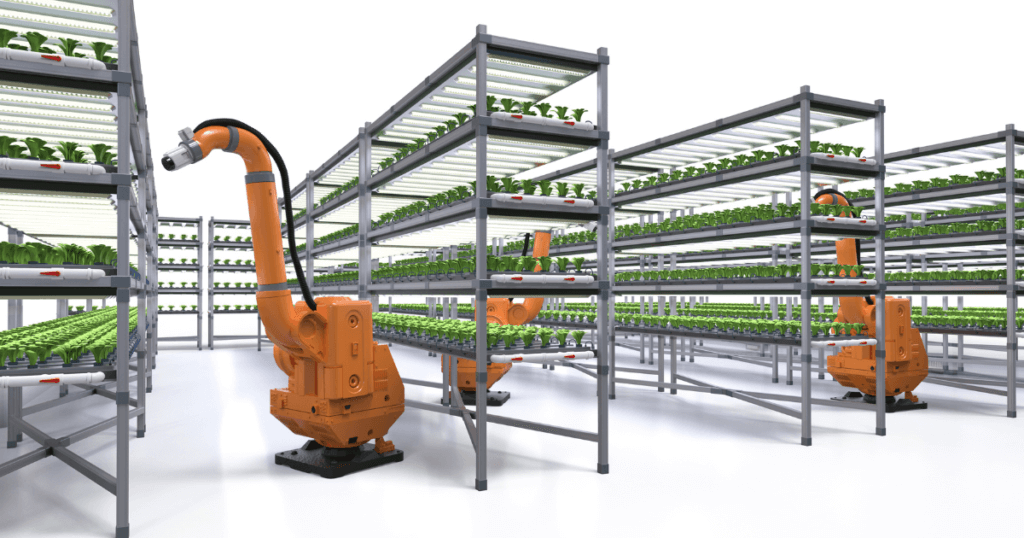
1. A Paradigm Shift in Food Production
As the global population surges, the demand for sustainable food production methods becomes increasingly urgent. Automated hydroponic systems offer a promising solution, addressing the challenges faced by traditional agriculture and opening new avenues for efficient indoor farming. With advancements in technology and ongoing research, these systems are poised to play a pivotal role in meeting the world’s growing food requirements in a resource-efficient and environmentally friendly manner.
2. The Integration of AI and Machine Learning
Integrating artificial intelligence (AI) and machine learning (ML) holds immense potential for automated hydroponic systems. By leveraging AI algorithms and ML models, these systems can continuously learn and adapt to optimize crop growth, resource utilization, and pest management. This would enable growers to achieve even higher efficiency and productivity levels while reducing costs and environmental impact.
3. Empowering Sustainable Agriculture
Automated hydroponic systems align perfectly with the principles of sustainable agriculture. By minimizing the use of pesticides, herbicides, and fertilizers, these systems offer a more environmentally friendly approach to cultivation. Furthermore, their ability to be deployed in urban areas reduces the need for long-distance transportation, reducing carbon emissions associated with food distribution. This holistic approach to farming ensures that future generations can benefit from healthy, nutritious produce while preserving the planet for years to come.
Conclusion
Automated hydroponic systems represent a transformative leap forward in indoor farming, simplifying cultivation practices, increasing yields, and optimizing resource utilization. By harnessing the power of automation and integrating it with hydroponics, these systems offer a sustainable and efficient solution to the challenges faced by traditional farming methods. As technology continues to evolve and innovations emerge, automated hydroponic systems are poised to shape the future of agriculture, ensuring a steady supply of fresh produce while promoting environmental stewardship. Embracing these cutting-edge systems is a smart business decision and a commitment to a greener and more food-secure world.
FAQs – Automated Hydroponic Systems
1. How do automated hydroponic systems handle power outages or system failures?
Automated systems rely on electricity and internet connectivity to function. In the event of a power outage or system failure, backup power solutions such as battery storage, generators, or uninterruptible power supplies (UPS) can help maintain operations. Additionally, some systems include fail-safe mechanisms that allow for manual control in emergencies.
2. What are the initial costs of setting up an automated hydroponic system, and is it financially viable?
The initial setup costs for an automated hydroponic system can vary widely depending on the scale, technology, and level of automation. Small-scale setups may range from a few hundred to a few thousand dollars, while commercial operations can cost significantly more. However, long-term savings from reduced resource consumption, higher yields, and labor efficiency often justify the investment.
3. Can automated hydroponic systems be used for medicinal or pharmaceutical plant cultivation?
Yes, automated hydroponic systems are widely used for cultivating medicinal plants, including cannabis, due to their ability to provide precise environmental control. This ensures consistency in plant quality, potency, and active compound concentration, which is crucial for pharmaceutical applications.
4. What are the key differences between hydroponics, aeroponics, and aquaponics in automated farming?
Hydroponics involves growing plants in a nutrient-rich water solution, while aeroponics suspends plants in the air and delivers nutrients via misting. Aquaponics integrates hydroponics with fish farming, using fish waste as a natural nutrient source for plants. Each method has distinct benefits, and automation can enhance efficiency in all three systems.
5. How do automated hydroponic systems contribute to food security in urban areas?
Automated hydroponics enable food production in urban settings by utilizing vertical farming and indoor growing techniques. This reduces reliance on long-distance transportation, minimizes food waste, and ensures fresh, locally grown produce is available year-round, making it a viable solution for addressing food security challenges in cities.
Useful Resources to learn more about Automated Hydroponic Systems
- URL: University of California, Davis – Controlled Environment Agriculture
- This webpage is hosted by the University of California, Davis, and provides valuable information on controlled environment agriculture (CEA). It covers topics related to indoor farming techniques, including hydroponics, and offers research-based insights.
- URL: United States Department of Agriculture (USDA) – National Institute of Food and Agriculture
- The USDA’s National Institute of Food and Agriculture is a reputable source of information on agricultural research and advancements. Linking to their website can lend credibility to the content and provide access to additional resources on sustainable farming practices.
- URL: NASA – Hydroponics and Plant Growth Research
- NASA has conducted extensive research on hydroponics and its applications in space exploration. This webpage focuses on their hydroponics research and can contribute to the authority of the content by showcasing how hydroponics is used in challenging environments.
- URL: World Health Organization (WHO) – Food Safety
- Food safety is an important aspect of agriculture, including indoor farming. Linking to the WHO’s Food Safety webpage can establish credibility and highlight the importance of safe and sustainable food production methods.
- URL: University of Arizona Controlled Environment Agriculture Center
- The University of Arizona’s Controlled Environment Agriculture Center is a leading institution in the field of indoor farming and hydroponics. Their website provides resources, research findings, and educational programs related to controlled environment agriculture.
Some videos related to Automated Hydroponic Systems
